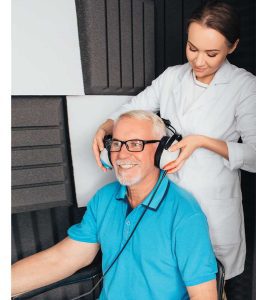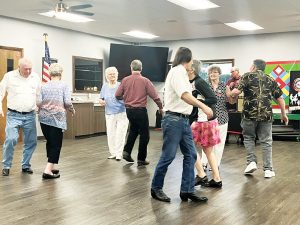By Shannon Laesch, APRN, Select Care PLLC
One in two women over the age of 50 will suffer a fracture caused by osteoporosis in her remaining lifetime. Despite its prevalence, there are many myths and misconceptions about this “silent” disease. These myths may be a reason why osteoporosis is underdiagnosed and undertreated.
A fragility fracture (breaking a bone by falling from a standing height or lower) can impact day-to-day life, but it can also be an indicator for osteoporosis in postmenopausal women. When you have osteoporosis, even daily tasks such as taking your dog for a walk can put you at risk for a fragility fracture of the wrist, leg, or even hip. But, a startling 82 percent of postmenopausal women did not identify such fractures as a possible risk factor for osteoporosis, according to results from a recent online survey of over 1,000 postmenopausal women conducted by Harris Poll on behalf of Radius Health, in partnership with HealthyWomen and the National Osteoporosis Foundation.
That first fracture should be your cue to talk to your health care professional about treatment options that may lower your risk of breaking a bone again.
“It is critical that postmenopausal women do not dismiss seemingly insignificant fragility fractures as ‘clumsiness,’ but instead see them as an important indicator for bone fragility, disease progression, and the need for intervention,” says Dr. Andrea Singer, MD, FACP, CCD, clinical director and trustee of the National Osteoporosis Foundation.
This is just one myth about osteoporosis. There are many others, including:
Myth: Osteoporosis only affects the elderly.
Truth: Osteoporosis often affects women after menopause. Natural menopause can occur as early as age 50. The rate of bone loss after menopause is increased with the accompanying loss of estrogen. Osteoporosis is a progressive disease that lowers the density of bones over time, making them weaker and more likely to fracture.
Myth: Osteoporosis isn’t very common.
Truth: Ten million Americans are estimated to have osteoporosis, and more than 8 million of those are women.
Myth: Osteoporosis isn’t that serious.
Truth: More women over the age of 55 were hospitalized in the United States for osteoporosis-related fractures than for stroke, heart attack, or breast cancer. Yet, according to the survey, postmenopausal women were more likely to be concerned with a diagnosis of stroke, heart attack, and breast cancer than osteoporosis.
Myth: Health care providers will tell you when it’s time to test for osteoporosis.
Truth: Research suggests only 2 in 10 older women in the United States who suffer a fracture are tested or treated for osteoporosis. Furthermore, according to the survey, 96 percent of postmenopausal women who have not yet been diagnosed with osteoporosis and who suffered a fragility fracture were not told by their health care provider it could be linked to osteoporosis.
Myth: Getting enough calcium and vitamin D is enough to treat osteoporosis.
Truth: About 3 in 10 postmenopausal women incorrectly believe that drinking milk or taking calcium supplements alone will prevent osteoporotic fractures/breaks, the survey found. While getting enough calcium and vitamin D is critical to keep bones strong, it may not be enough when it comes to treating osteoporosis in postmenopausal women, especially after a fracture. It’s important to learn about osteoporosis and talk to your health care professional.
Myth: There is no way to build new bone after menopause.
Truth: About one-quarter of postmenopausal women incorrectly believe there is no way to build new bone at their age, the survey found. The truth is that certain types of treatment for postmenopausal osteoporosis can help build new bone, while others help slow bone loss. Separating the truths from the myths is an important step in pursuing appropriate care for bone health—not just for postmenopausal women, but for everyone. To get more information about osteoporosis, visit the Fractured Truth website at www.fracturedtruths.com.
Shannon Laesch is an Advanced Practice Nurse and is board certified as an Adult Health Clinical Nurse Specialist. She has a passion for helping patients achieve optimal bone health through multiple treatment options. She also offers IV Hydration Therapy, micronutrient and food sensitivity testing. For more information, contact Shannon at 309-808-1450 or visit Select Care PLLC online at www.selectcarepllc.com. Her office is located at 2103 E. Washington St, Suite 2C in Bloomington.
For additional informative and inspirational articles, visit 50 Plus News and Views Bloomington/Normal online edition today.










